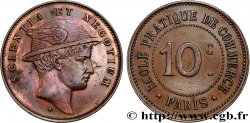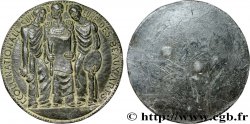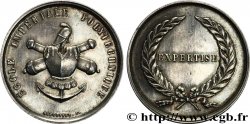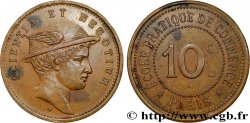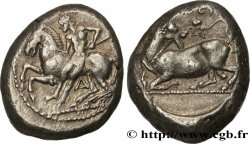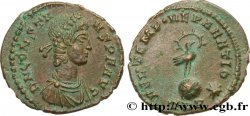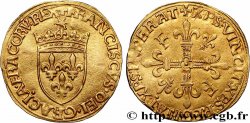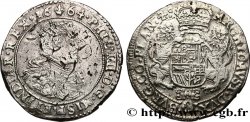E-auction 114-61555 - fjt_267947 - EDUCATION / SCHOOLS Lycée républicain de Paris n.d.
You must signin and be an approved bidder to bid, LOGIN TO BID. Accounts are subject to approval and the approval process takes place within 48 hours. Do not wait until the day a sale closes to register. Clicking on « bid » constitutes acceptance of the terms of use of cgb.fr private e-auctions.
Bids must be placed in whole Euro amounts only. The sale will start closing at the time stated on the item description; any bids received at the site after the closing time will not be executed. Transmission times may vary and bids could be rejected if you wait until the last second. For further information ckeck the E-auctions F.A.Q.
NO BUYER'S FEE.
NO BUYER'S FEE.
| Estimate : | 60 € |
| Price : | 20 € |
| Maximum bid : | 50 € |
| End of the sale : | 22 June 2015 18:41:00 |
| bidders : | 5 bidders |
Type : Lycée républicain de Paris
Date: n.d.
Metal : red copper
Diameter : 30 mm
Orientation dies : 1 h.
Weight : 09,11 g.
Edge : lisse
Rarity : R2
Coments on the condition:
Faiblesse de frappe à l’exergue de Pallas
Obverse
Obverse legend : LYCEE REPUBLICAIN DE PARIS.
Obverse description : dans un grènetis.
Reverse
Reverse legend : CONSOCIARE AMAT.
Reverse description : Pallas casquée avec cimier, debout à gauche, tenant un niveau et une lance.
Reverse translation : Elle aime à unir.
Commentary
Hennin accorde, page 480, plusieurs pages de commentaires à ce jeton mais ne signale pas l’usage récurrent du type CONSOCIARE AMAT dans les institutions du nouveau régime, où nous voyons une inspiration maçonnique directe.
Concernant cet exemplaire, la qualité de frappe, de métal, de coin, de polissage du coin et de conservation pose problème. En effet, il ne semble pas tardif car le coin est en parfait état et à fleur mais la qualité technique semble impensable pour la période.
Pourtant, le traitement de la tranche pose le problème inverse : alors que les jetons à tranche lisse à partir des années 1840 (sans oublier qu’ils portent poinçon depuis 1831, notre exemplaire n’a pas de poinçon) sont d’une qualité comparable, leur tranche est parfaitement lisse alors que celle de notre exemplaire montrent encore des traces de traitement artisanal à un examen minutieux. Que penser ? Frappe de prestige initiale ? Mais alors pourquoi du cuivre ? Nous espérons qu’un autre exemplaire pourra nous éclairer sur la sate de frappe de notre exemplaire.
La légende de revers est extraite des Odes d'Horace (4.II, od.3, v.10). Ce jeton, qui reprend, en lui supprimant son exergue et sa date, un revers de la série des bâtiments du Roi, a été utilisé comme "jeton banal" par des loges maçonniques trop pauvres pour faire frapper leurs propres jetons. Il est aussi attribué sans preuve aux architectes.
Hennin devotes, on page 480, several pages of comments to this token but does not report the recurring use of the CONSOCIARE AMAT type in the institutions of the new regime, where we see a direct Masonic inspiration..
Concerning this copy, the quality of the strike, metal, die, die polishing and conservation poses problems.. In fact, it does not seem late because the corner is in perfect condition and flush but the technical quality seems unthinkable for the period.
However, the treatment of the edge poses the opposite problem: while the smooth-edged tokens from the 1840s onwards (not forgetting that they have been hallmarked since 1831, our example has no hallmark) are of comparable quality, their edge is perfectly smooth while that of our example still shows traces of artisanal treatment upon close examination.. What should we think? Initial prestige strike? But then why copper? We hope that another example can shed light on the date of strike of our example..
The reverse legend is taken from the Odes of Horace (4. II, od. 3, v. 10). This token, which, without its exergue and date, is a reverse of the series of the King's buildings, was used as a \\\"banal token\\\" by Masonic lodges too poor to have their own tokens struck.. It is also attributed without proof to architects
Concernant cet exemplaire, la qualité de frappe, de métal, de coin, de polissage du coin et de conservation pose problème. En effet, il ne semble pas tardif car le coin est en parfait état et à fleur mais la qualité technique semble impensable pour la période.
Pourtant, le traitement de la tranche pose le problème inverse : alors que les jetons à tranche lisse à partir des années 1840 (sans oublier qu’ils portent poinçon depuis 1831, notre exemplaire n’a pas de poinçon) sont d’une qualité comparable, leur tranche est parfaitement lisse alors que celle de notre exemplaire montrent encore des traces de traitement artisanal à un examen minutieux. Que penser ? Frappe de prestige initiale ? Mais alors pourquoi du cuivre ? Nous espérons qu’un autre exemplaire pourra nous éclairer sur la sate de frappe de notre exemplaire.
La légende de revers est extraite des Odes d'Horace (4.II, od.3, v.10). Ce jeton, qui reprend, en lui supprimant son exergue et sa date, un revers de la série des bâtiments du Roi, a été utilisé comme "jeton banal" par des loges maçonniques trop pauvres pour faire frapper leurs propres jetons. Il est aussi attribué sans preuve aux architectes.
Hennin devotes, on page 480, several pages of comments to this token but does not report the recurring use of the CONSOCIARE AMAT type in the institutions of the new regime, where we see a direct Masonic inspiration..
Concerning this copy, the quality of the strike, metal, die, die polishing and conservation poses problems.. In fact, it does not seem late because the corner is in perfect condition and flush but the technical quality seems unthinkable for the period.
However, the treatment of the edge poses the opposite problem: while the smooth-edged tokens from the 1840s onwards (not forgetting that they have been hallmarked since 1831, our example has no hallmark) are of comparable quality, their edge is perfectly smooth while that of our example still shows traces of artisanal treatment upon close examination.. What should we think? Initial prestige strike? But then why copper? We hope that another example can shed light on the date of strike of our example..
The reverse legend is taken from the Odes of Horace (4. II, od. 3, v. 10). This token, which, without its exergue and date, is a reverse of the series of the King's buildings, was used as a \\\"banal token\\\" by Masonic lodges too poor to have their own tokens struck.. It is also attributed without proof to architects








 Report a mistake
Report a mistake Print the page
Print the page Share my selection
Share my selection Ask a question
Ask a question Consign / sell
Consign / sell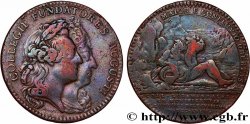
 Full data
Full data